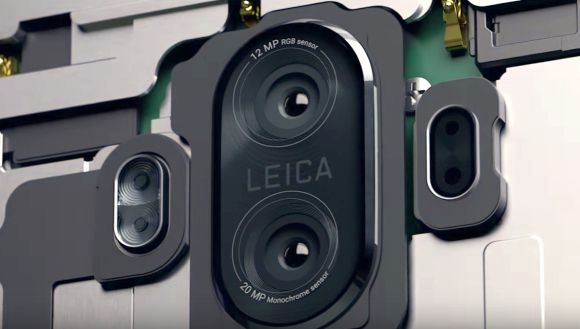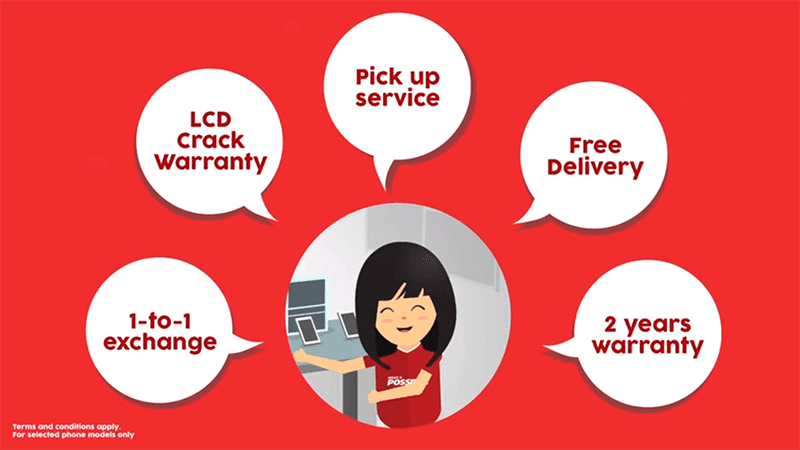Excellent news, everybody: Smartphones are so good these days, it's hard to make a truly terrible choice. But whether you plan to hold onto it for years or switch it when the next hotness comes along, you still want to make sure you're getting the right one for you.
Right now, my favourite phones are: Huawei Mate 9, Huawei Mate 9 Pro, IPhone 7,7 Plus, Google Pixel,XL, Huawei P9,P9 Plus, Samsung S7 Edge.
Some of the criteria’s on choosing a new phone are:
Big phone or small screen?
If you insist on a phone with a small screen (under 4.5 inches), have a look at the Huawei Y3II, iPhone SE or Sony Xperia X Compact. Otherwise, get used to anything from 4.7 to 6 inches (or even larger).

For screens 4.7-inches and larger:
Look for a minimum screen resolution of 1,080p like the Honor 8 5.2” with 1080 x 1920 pixels.

A 2,560x1,440 resolution is even better, especially for 5.5-inch screens and larger however the resolution could take a toll on your battery life. If you plan to use a VR headset like Google Daydream, the higher the resolution, the better -- when the phone is inches from your face, pixel count matters.
Camera quality
If you don't follow camera tech, a list of sensor brands and F-stops won't make much sense when trying to determine if your photos will be any good.
•Higher megapixels don't always equal higher quality shots. A 12-megapixel camera might take better photos than a 16-megapixel camera.
•That said, phones with 8 megapixel rear cameras only appear on budget phones these days. Expect middling quality.
•If a phone has two rear cameras like the Huawei Mate 9, P9, LG V20 & Honor 8, it's there to create an optional depth effect (also known as a background blur), capture more lights for better image quality or to give you a wide-angle option.

•Optical image stabilization, or OIS, helps prevent blur from shaking hands. This is especially helpful when shooting indoors or in low-light. It won't help with blur caused by a moving subject, though.
•Most phone cameras come with HDR, self-timers, beauty mode and plenty of filters and effects.
Battery life and performance
Most phones from the middle price range and up can handle a basic day's worth of phone calls, email, gaming and music needs, though some internal tech is more refined than others. Some mid-price phones even use the same chips as those with nosebleed prices.

In general:
•You'll need to charge most phones once a day, so plan accordingly -- stock up on an extra charger for your workplace or your bag.
•You'll typically get longer life from a 3,000-mAh battery or above.
•Maps and music streaming suck down battery life faster than other activities. So does keeping brightness on full blast.
•An octa-core processor isn't always "better" than a quad-core chipset.
•For Huawei HiSilicon Kirin processors, higher-numbered chips are the most recent. So 960 is newer (and faster) than 955 and 950. The same goes to Qualcomm Snapdragon processors.
Bonus features
•Fingerprint scanner -- usually on the back, power button or home button. Take Huawei Mate 9 for example. The fingerprint scanner is positioned at the back of the device below the camera making it easy to access. However on the Huawei Mate 9 Pro, the fingerprint scanner is placed on the home button. This really depends on user usability on which one they prefer.

•Dual sim cards
•Micro-SD storage on some Android phones.
•Water resistant, IP67 and higher is best.
•Wireless charging, as available on the Samsung Galaxy S7 and S7 Edge.
•Stereo audio speakers or enhanced audio through headphones.
•USB type-C connector, the new standard for Android phones.
•Removable battery -- note that this feature is becoming rare.
Other questions to ask yourself
•If it has a USB-C port, do adapter dongles (for example USB-to-USB-C) come in the box, or will you need to buy one?
•Does it have a standard 3.5mm headphone jack or will you need to buy an adapter dongle?
•If the phone breaks, what will you have to do to fix it?
•Does the phone support Wi-Fi calling?
•Is it locked to a carrier or can you add a SIM card for any network? Do you lose any features either way?
•Can you travel with it internationally by simply swapping the SIM card?
•Is it the same price if you pay in full as you do in instalments? (It should be)
•Will the warranty cover your needs or will you pay for an extended warranty?

In the end, it really depends on our preferences & the most important thing; budget!
So what is the key factors for you to choose your next smartphone? :drool:
Right now, my favourite phones are: Huawei Mate 9, Huawei Mate 9 Pro, IPhone 7,7 Plus, Google Pixel,XL, Huawei P9,P9 Plus, Samsung S7 Edge.
Some of the criteria’s on choosing a new phone are:
Big phone or small screen?
If you insist on a phone with a small screen (under 4.5 inches), have a look at the Huawei Y3II, iPhone SE or Sony Xperia X Compact. Otherwise, get used to anything from 4.7 to 6 inches (or even larger).

For screens 4.7-inches and larger:
Look for a minimum screen resolution of 1,080p like the Honor 8 5.2” with 1080 x 1920 pixels.

A 2,560x1,440 resolution is even better, especially for 5.5-inch screens and larger however the resolution could take a toll on your battery life. If you plan to use a VR headset like Google Daydream, the higher the resolution, the better -- when the phone is inches from your face, pixel count matters.
Camera quality
If you don't follow camera tech, a list of sensor brands and F-stops won't make much sense when trying to determine if your photos will be any good.
•Higher megapixels don't always equal higher quality shots. A 12-megapixel camera might take better photos than a 16-megapixel camera.
•That said, phones with 8 megapixel rear cameras only appear on budget phones these days. Expect middling quality.
•If a phone has two rear cameras like the Huawei Mate 9, P9, LG V20 & Honor 8, it's there to create an optional depth effect (also known as a background blur), capture more lights for better image quality or to give you a wide-angle option.

•Optical image stabilization, or OIS, helps prevent blur from shaking hands. This is especially helpful when shooting indoors or in low-light. It won't help with blur caused by a moving subject, though.
•Most phone cameras come with HDR, self-timers, beauty mode and plenty of filters and effects.
Battery life and performance
Most phones from the middle price range and up can handle a basic day's worth of phone calls, email, gaming and music needs, though some internal tech is more refined than others. Some mid-price phones even use the same chips as those with nosebleed prices.

In general:
•You'll need to charge most phones once a day, so plan accordingly -- stock up on an extra charger for your workplace or your bag.
•You'll typically get longer life from a 3,000-mAh battery or above.
•Maps and music streaming suck down battery life faster than other activities. So does keeping brightness on full blast.
•An octa-core processor isn't always "better" than a quad-core chipset.
•For Huawei HiSilicon Kirin processors, higher-numbered chips are the most recent. So 960 is newer (and faster) than 955 and 950. The same goes to Qualcomm Snapdragon processors.
Bonus features
•Fingerprint scanner -- usually on the back, power button or home button. Take Huawei Mate 9 for example. The fingerprint scanner is positioned at the back of the device below the camera making it easy to access. However on the Huawei Mate 9 Pro, the fingerprint scanner is placed on the home button. This really depends on user usability on which one they prefer.

•Dual sim cards
•Micro-SD storage on some Android phones.
•Water resistant, IP67 and higher is best.
•Wireless charging, as available on the Samsung Galaxy S7 and S7 Edge.
•Stereo audio speakers or enhanced audio through headphones.
•USB type-C connector, the new standard for Android phones.
•Removable battery -- note that this feature is becoming rare.
Other questions to ask yourself
•If it has a USB-C port, do adapter dongles (for example USB-to-USB-C) come in the box, or will you need to buy one?
•Does it have a standard 3.5mm headphone jack or will you need to buy an adapter dongle?
•If the phone breaks, what will you have to do to fix it?
•Does the phone support Wi-Fi calling?
•Is it locked to a carrier or can you add a SIM card for any network? Do you lose any features either way?
•Can you travel with it internationally by simply swapping the SIM card?
•Is it the same price if you pay in full as you do in instalments? (It should be)
•Will the warranty cover your needs or will you pay for an extended warranty?

In the end, it really depends on our preferences & the most important thing; budget!
So what is the key factors for you to choose your next smartphone? :drool:
